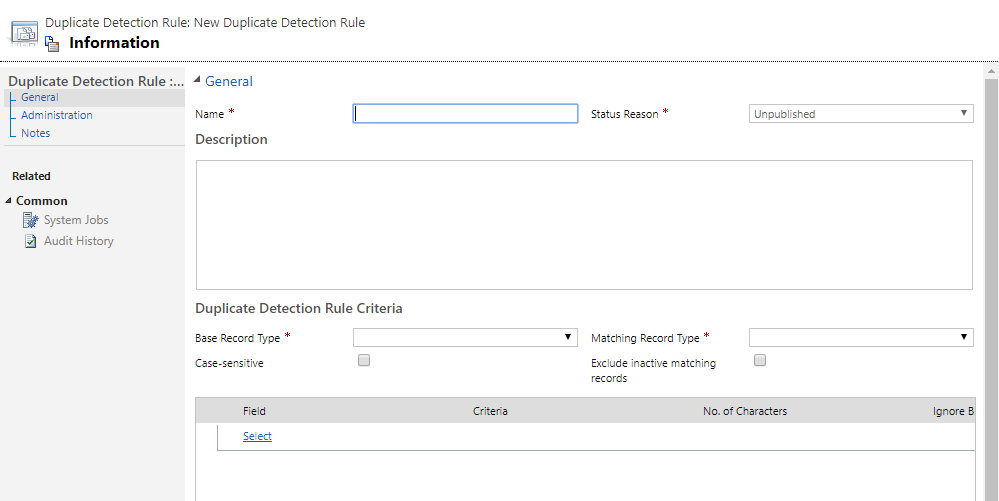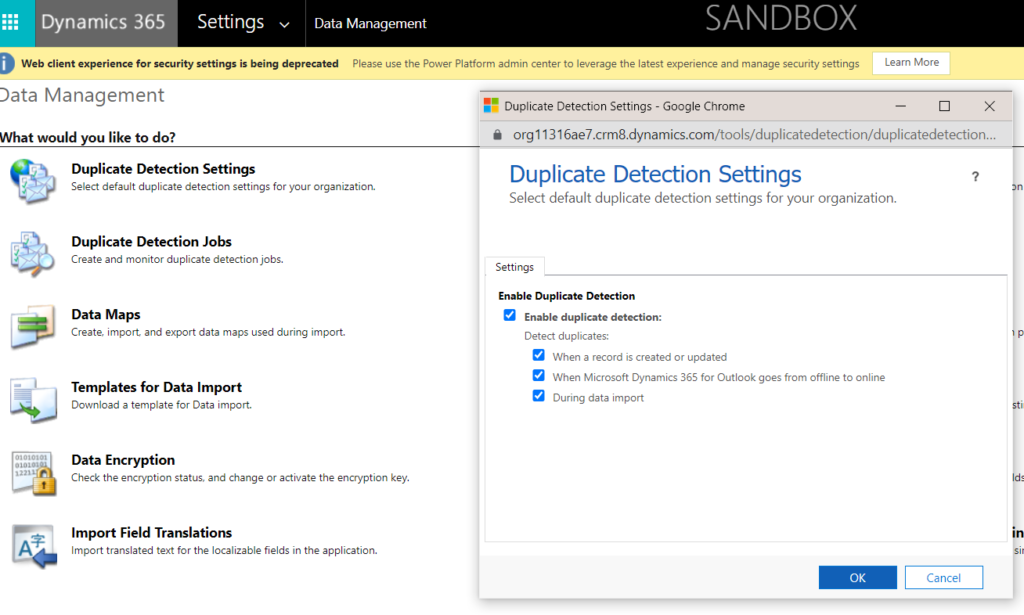Step 1: Go to your Dynamics 365 system then go to ‘Settings’ then select ‘Data Management’ and go to ‘Duplicate Detection Rules

Step 2: In the top left corner of this section, select ‘New’.

Step 3: Fill the details for the duplicate detection rule that you would like to create which includes the following elements:
Name and description for the rule
Select the type of entity that the rule will apply to from the ‘Base Record Type’ list
Select the type of entity that you will be comparing the ‘Base Record Type’ to by choosing a ‘Matching Record Type’ from the drop down list.
Select whether or not you would like the rule to be case sensitive
Select the criteria for detecting a matching record

Step 4: Click ‘Save and Close’ after you have filled in all the relevant details.
Step 5: To make the new or changed duplicate detection rule usable, select the rule you have created, and then select ‘Publish’.
Part B – Updating your duplicate detection settings
After completing Part A, you will need to make sure that your duplicate detection settings are enabled (you can also disable these if required) before you can setup a duplicate detection job using your duplicate detection rule.
Step 1: Go to ‘Settings’ followed by ‘Data Management’ and then choose ‘Duplicate Detection Settings’ and tick all the boxes then click ‘OK’.

Part C – Setting up a duplicate detection job
After completing Part B, you are now ready to create your duplicate detection job which can be done through the following steps:
Step 1: In Dynamics 365, go to ‘Settings’ followed by ‘Data Management’ then select ‘Duplicate Detection Jobs’ and click on ‘New’ in the top left corner. This will bring up the Duplicate Detection Wizard which will help you to create the job needed for checking duplicate records. From here, select ‘Next’.
Step 2: When you get to the next stage, in the ‘Look for’ drop-down list select the duplicate detection rule which you created earlier.

Step 3: Select ‘Next’ then either accept the default name or give it your own name. After this, then fill in the start time for the job and how often you would like this to run in days (To run this job on a daily basis put ‘1’).
Step 4: If you want to receive an email notification when the job has been completed you can do so by checking the ‘Email Options’ box. After this, select ‘Next’ and then ‘Submit’.
Part D – Merging duplicate records
After completing Part C, you can then review the results and from here you can view the duplicate records. You can do this by following these steps:
Step 1: Within the ‘Duplicate Detection Jobs’ section double click on the job you created to bring up the results and then choose ‘View Duplicates’ on the left hand side.
Step 2: To merge duplicate records, select one of the duplicate records in the top table which will then show the duplicate in the table below it. From here select ‘Merge’ in the toolbar.
Step 3: Choose the master record i.e the one that you would like to keep. From here, pick the individual fields or sections that should be kept on the master record.
Step 4: After select ‘OK’ to complete the merge process.

